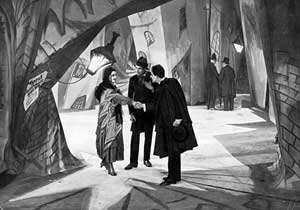“Contemporary art has been a war victim through Surrealism, Expressionism, Viennese Actionism, and terrorism today.” (1)
I recently read a chapter from The Accident of Art, Paul Virilio’s book critiquing contemporary art as facing a catastrophe born by technology and society. The chapter, A Pitiless Art?, claims that art is a casualty of war but doesn’t know it. Virilio argues that the two World Wars and the post 9/11 wars have been key factors driving aesthetics, style, the very philosophy of art, often without realization from the the artist.
Here’s a quote from Virilio, arguing that abstract art is an example of a style born from the trauma of war:
“Take another war victim: Bazaine, the abstract painter I knew and who also used to make stained-glass—I didn’t make any with him. They said to him, “Hey, you’ve become abstract.” And he would answer, “Yes, you could call it that.” But he preferred the term “non-figurative.” He insisted that “abstract doesn’t fit me.” So they asked him when did this happen. “After the war,” he replied, “my painting diverged all by itself.” I wrote it down.
“…In the first instance, technology made the divergence unavoidable: heliography, or light figured by itself through the stenotype, and later figured on photosensitive substances. In the second, a social trauma caused figuration to diverge. Disfiguration —when Bazaine says “non figurative,” that’s what he means. The war is disfiguring art, the way it destroyed and smashed the 7 Rheims cathedral and later on destroyed Oradour-sur-Glane. War does not simply destroy bodies with shells and bombs, it destroys outdoor spaces as well.
“…Abstract art is not abstract, it is an art of retreat.”
You can read the chapter online, as a PDF. I suggest also reading Walter Benjamin’s, The Work of Art in the Age of Mechanical Reproduction, another essay on art stumbling in the face of our technological society. Alain Badiou’s essay, Fifteen Theses on Contemporary Art, can serve as a great response, outlining some of the ways in which art can be emancipatory.
From Badiou:
“My position is that artistic creation today should suggest a new universality, not to express only the self or the community, but that it’s a necessity for the artistic creation to propose to us, to humanity in general, a new sort of universality, and my name for that is truth.
“…So, we have to create a new possibility. But to create a new possibility is not the same thing as to realize a new possibility.
“…I think the creation of new possibility is today the great function of art.”
(First published at nmaleki.com)
References:
(1) Virilio, Paul & Lotringer, Sylvere, ‘The Accident of Art.’ MIT Press, September 2005, pp. 16-17.



